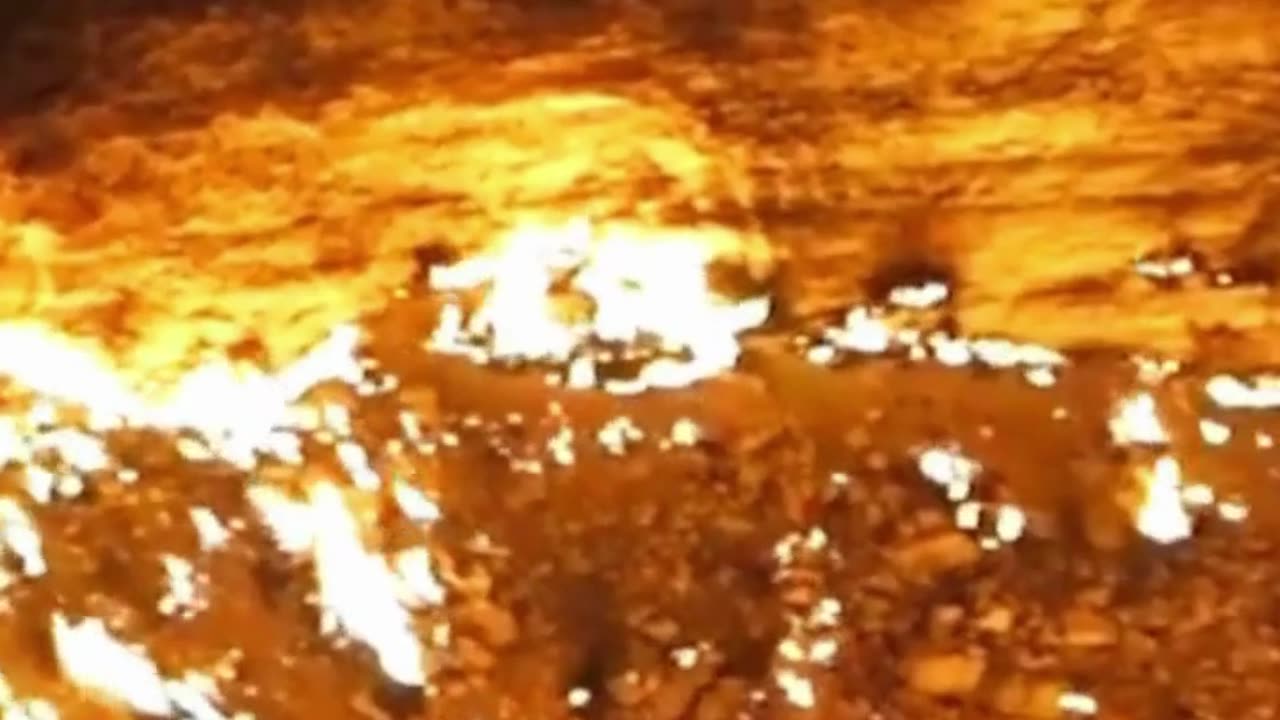Premium Only Content

The Darvaza Gas Crater: A Glimpse into the Inferno
The Darvaza Gas Crater, often referred to as the "Door to Hell" or "Gates of Hell," is a natural gas crater located in the Karakum Desert of Turkmenistan. It's a unique and striking geological feature that has gained global attention due to its fiery appearance and mysterious origin.
Here are some key details about the Darvaza Gas Crater:
Origin and Formation: The crater is the result of a drilling mishap that occurred in 1971. Soviet geologists were drilling for natural gas in the area when the ground collapsed, creating a large sinkhole. Fearing the release of toxic gases, they decided to ignite the gas in the crater, expecting it to burn off in a few weeks. However, the gas has been burning continuously ever since, leading to the crater's fiery appearance.
Size and Depth: The Darvaza Gas Crater has a diameter of around 69 to 98 meters (226 to 322 feet) and a depth of approximately 30 meters (98 feet). The walls of the crater are steep and composed of compacted sand and clay.
Burning Gas: The crater is filled with burning natural gas that produces a continuous flame, often reaching up to several meters in height. The flames are visible both during the day and at night, creating a surreal and mesmerizing spectacle.
Tourist Attraction: Over the years, the Darvaza Gas Crater has become a popular tourist destination, drawing visitors from around the world who come to witness the unique and otherworldly sight. The crater's remote location in the desert adds to its allure.
Scientific Interest: While the crater's accidental creation and long-lasting gas burn have made it famous, it has also attracted scientific interest. Researchers study the crater to better understand the geological processes involved and to gain insights into the behaviour of underground natural gas reservoirs.
Environmental Concerns: The continuous burning of natural gas at the crater contributes to greenhouse gas emissions, primarily in the form of carbon dioxide and methane. This raises environmental concerns, as these gases are potent contributors to climate change. There have been discussions about extinguishing the fire to mitigate its environmental impact, but it have been unsuccessful so far.
Overall, the Darvaza Gas Crater is a captivating and intriguing natural phenomenon that combines both scientific and cultural significance.
-
 1:43:21
1:43:21
Redacted News
9 hours agoBREAKING! UKRAINE AGREES TO CEASEFIRE WITH RUSSIA... BUT THERE'S A BIG CATCH | Redacted News
178K314 -
 58:17
58:17
Candace Show Podcast
10 hours agoShould We Feel Bad For Blake Lively? | Candace Ep 157
149K296 -
 3:06:52
3:06:52
The Nerd Realm
11 hours ago $11.96 earnedHollow Knight Voidheart Edition #19 | Nerd Realm Playthrough
89.8K6 -
 1:17:27
1:17:27
Awaken With JP
13 hours agoThe Current Thing: Tesla Protesting - LIES Ep 82
155K75 -
 1:07:08
1:07:08
Sean Unpaved
10 hours agoNFL Free Agency Rolls On! MLB Spring Training Heats Up along with 3x World Series Champ Dave Stewart
92.8K3 -
 2:10:15
2:10:15
Right Side Broadcasting Network
15 hours agoLIVE REPLAY: White House Press Secretary Karoline Leavitt Holds Press Briefing - 3/11/25
178K45 -
 2:06:00
2:06:00
The Quartering
13 hours agoTrump Goes NUCLEAR On Canada, Blasts Massie, Harry Potter Race Swap, Man Humiliated On TV Show
128K69 -
 1:03:09
1:03:09
The White House
13 hours agoPress Secretary Karoline Leavitt Briefs Members of the Media, Mar. 11, 2025
121K73 -
 1:07:03
1:07:03
Winston Marshall
12 hours agoEXCLUSIVE : Oliver Anthony On Life After ‘Rich Men’, The Christian Counter Culture and The Elites
80.8K13 -
 1:44:47
1:44:47
Russell Brand
14 hours agoDigital Censorship & Political Warfare: X Attacked, Rand Paul Rebels, Free Speech on Trial – SF551
176K28